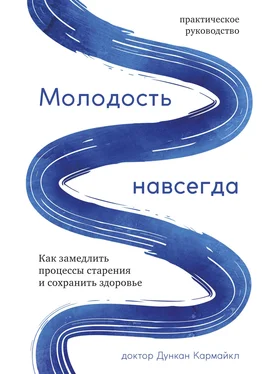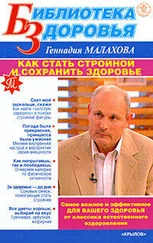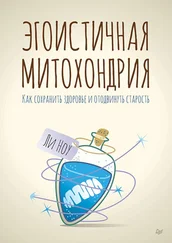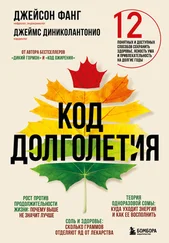Wang, Y. et al. ‘Molecular Mechanism of Glutathione-mediated Protection from Oxidised Low-density Lipoprotein Protein-induced Cell Injury in Human Macrophages: Role of Glutathione Reductase and Glutaredoxin.’ Free Radic Biol Med (2006): 41: 775–785.
‘Novartis Phase III CANTOS Study Demonstrates that Targeting Inflammation ACZ885 Reduces Cardiovascular Risk’ (27 August 2017). URL: https://www.novartis.com/news/media-releases/novartis-phase-iii-cantos-study-demonstrates-targeting-inflammation-acz885.
Levine, M. et al. ‘Low Protein Intake is Associated with a Major Reduction in IGF-1, Cancer, and Overall Mortality in the 65 and Younger but Not Older Population.’ Cell Metabolism (2014): 19: 407–417.
Bray, G. et al. ‘Dietary Sugar and Body Weight: Have We Reached a Crisis in the Epidemic of Obesity and Diabetes? Health be damned! Pour on the sugar.’ Diabetes Care (2014): 37: 950–956.
‘Just How Much Sugar Do Americans Consume? It’s complicated.’ Associated Press (20 September 2016).
См. рекомендации Американской ассоциации кардиологов: http://www.heart.org/HEARTORG/HealthyLiving/HealthyEating/Nutrition/Added-Sugars_UCM_305858_Article.jsp#.WbIi9q2Q1sM.
Wang, Y. ‘The Obesity Epidemic in the United States – Gender, Age, Socioeconomic, Racial/Ethnic, and Geographic Characteristics: A Systematic Review and Meta-Regression Analysis.’ Am J Epidemiol (2007): 29: 6–28.
Streib, L. ‘World’s Fattest Countries.’ Forbes (8 February 2007).
‘Future Diets: The Global Rise of Obesity’. ODI (2014). URL: https://www.odi.org/opinion/9329-future-diets-global-rise-obesity.
French, S. A. et al. ‘Fast-food Restaurant-use Among Women in the Pound of Prevention Study: Dietary, Behavioral and Demographic Correlates.’ Nature (2000): 24: 1353–1359.
Ahmed, S. H. et al. ‘Intense Sweetness Surpasses Cocaine Reward.’ PLoS One (2007).
Hoebel, B, et al. ‘Sugar and Fat-bingeing Have Notable Dif erences in Addictive-like Behaviour.’ J Nutr (2009): 139: 623–628.
Corwin, R. L. et al. ‘Limited Access to a Dietary Fat Option Af ects Ingestive Behavior But Not Body Composition in Male Rats.’ Physiol Behav (1998): 65: 545–553.
Hoebel, B, et al. ‘Sugar and Fat-bingeing Have Notable Dif erences in Addictive-like Behaviour’. J Nutr (2009): 139: 623–628.
Kearns, C. E. et al. ‘Sugar Industry and Coronary Heart Disease Research: A Historical Analysis of Internal Industry Documents.’ JAMA (2016): 176: 1680–1685.
O’Connor, A. ‘How the Sugar Industry Shifted Blame to Fat.’ The New York Times (12 September 2016).
Kearns, C. E. et al. ‘Sugar Industry and Coronary Heart Disease Research: A Historical Analysis of Internal Industry Documents.’ JAMA (2016): 176: 1680–1685.
O’Connor, A. ‘Study Tied to Food Industry Tries to Discredit Sugar Guidelines.’ The New York Time (19 December 2016).
O’Connor, A. ‘Sugar Industry Long Downplayed Potential Harms.’ The New York Times (21 November 2017).
‘Independent experts find no grounds for retraction of BMJ article on dietary guidelines.’ The BMJ (2 December 2016). См. заявление BMJ для прессы: http://www.bmj.com/company/wp-content/uploads/2016/12/the-bmj-US-dietary-correction.pdf.
Teicholz, N. The Big Fat Surprise: Why Butter, Meat and Cheese Belong in a Healthy Diet. Simon & Schuster (2014).
Dietary guidelines for Americans, 2015–2020. Eighth Edition: https://health.gov/dietaryguidelines/2015/guidelines/.
‘Fewer Get Heart Attacks.’ Socialstyrelsen (4 November 2013). URL: http://www.socialstyrelsen.se/nyheter/2013november/farrefarhjartinfarkt.
Asmat et al. ‘Diabetes mellitus and oxidative stress – a concise review.’ Saudi Pharm J (2016): 24: 547–553.
Fields, S. ‘The Fat of the Land: Do Agricultural Subsidies Foster Poor Health?’ Environ Health Perspect (2004): 112: A820–823.
Lopes, M. and Prentice, C. ‘U.S. Corn Syrupmakers Slash Prices to Fend Of Cheap Sugar.’ Reuters (11 November 2013).
Younossi, Z. M. et al. ‘Global Epidemiology of Non-Alcoholic Fatty Liver Disease – Meta-Analytic Assessment of Prevalence, Incidence and Outcomes.’ Hepatology (2016): 64: 73–84.
Browning, J. D. et al. ‘Prevalence of Hepatic Steatosis in an Urban Population in the United States: Impact of Ethnicity.’ Hepatology (2004): 40 (6): 1387–1395.
Samuel, V. T. ‘Fructose-induced Lipogenesis: From Sugar to Fat to Insulin Resistance.’ Trends Endocrinol Metab (2011): 22: 60–65.
Lustig, R. Fat Chance: The Hidden Truth About Sugar, Obesity and Disease. Harper Collins (2012).
Stout, R. W. ‘Insulin-stimulated Lipogenesis in Arterial Tissue in Relation to Diabetes and Atheroma.’ The Lancet (1968): 2: 7570: 702–703.
Steinberg, D. ‘Thematic Review Series: The Pathogenesis of Atherosclerosis. An Interpretive History of the Cholesterol Controversy: Part 11: The Early Evidence Linking Hypercholesterolemia to Coronary Disease in Humans.’ J Lipid Res (2005): 46: 2: 179–190.
Mohanty, P. et al. ‘Glucose Challenge Stimulates Reactive Oxygen Species (ROS) Generation by Leucocytes.’ J Clin Endocrinol Metab (2000): 85 (8): 2970–2973.
Torres-Leal, F. L. et al. ‘The Role of Infl amed Adipose Tissue in Insulin Resistance.’ Cell Biochem Funct (December 2010): Vol 28: 623–631.
Chen, L. et al. ‘Mechanisms Linking Infl ammation to Insulin Resistance.’ Int J Endocrinol (2015): 508409: https://www.hindawi.com/journals/ije/2015/508409/.
Semenkovich, C. F. ‘Insulin Resistance and Atherosclerosis.’ J Clin Invest (2006): 116: 1813–1822.
Ibid.
Acheson, K. J. et al. ‘Metabolic Effects of Caf eine in Humans: Lipid Oxidation or Futile Cycling.’ Am J Clin Nutr (2004): 79: 40–46.
Duan, W. ‘Dietary Restriction Normalizes Glucose Metabolism and Brain-Derived Neurotrophic Factor Levels, Slows Disease Progression and Increases Survival in Huntington Mutant Mice.’ Proc Natl Acad Sci USA (4 March 2003): 100: 2911–2916.
Cassidy, S. et al. ‘High-intensity Interval Training: A Review of its Impact on Glucose Control and Cardiometabolic Health.’ Diabetologia (2017): 60: 7–23.
Lee, C. ‘Dietary Restriction with and without Caloric Restriction for Healthy Aging.’ Faculty Review (2016). URL: https://www.ncbi.nlm.nih.gov/pmc/articles/PMC4755412/.
Читать дальше
Конец ознакомительного отрывка
Купить книгу








![Дипак Чопра - Сила внутри тебя [Как «перезагрузить» свою иммунную систему и сохранить здоровье на всю жизнь] [litres]](/books/405248/dipak-chopra-sila-vnutri-tebya-kak-perezagruzit-thumb.webp)



